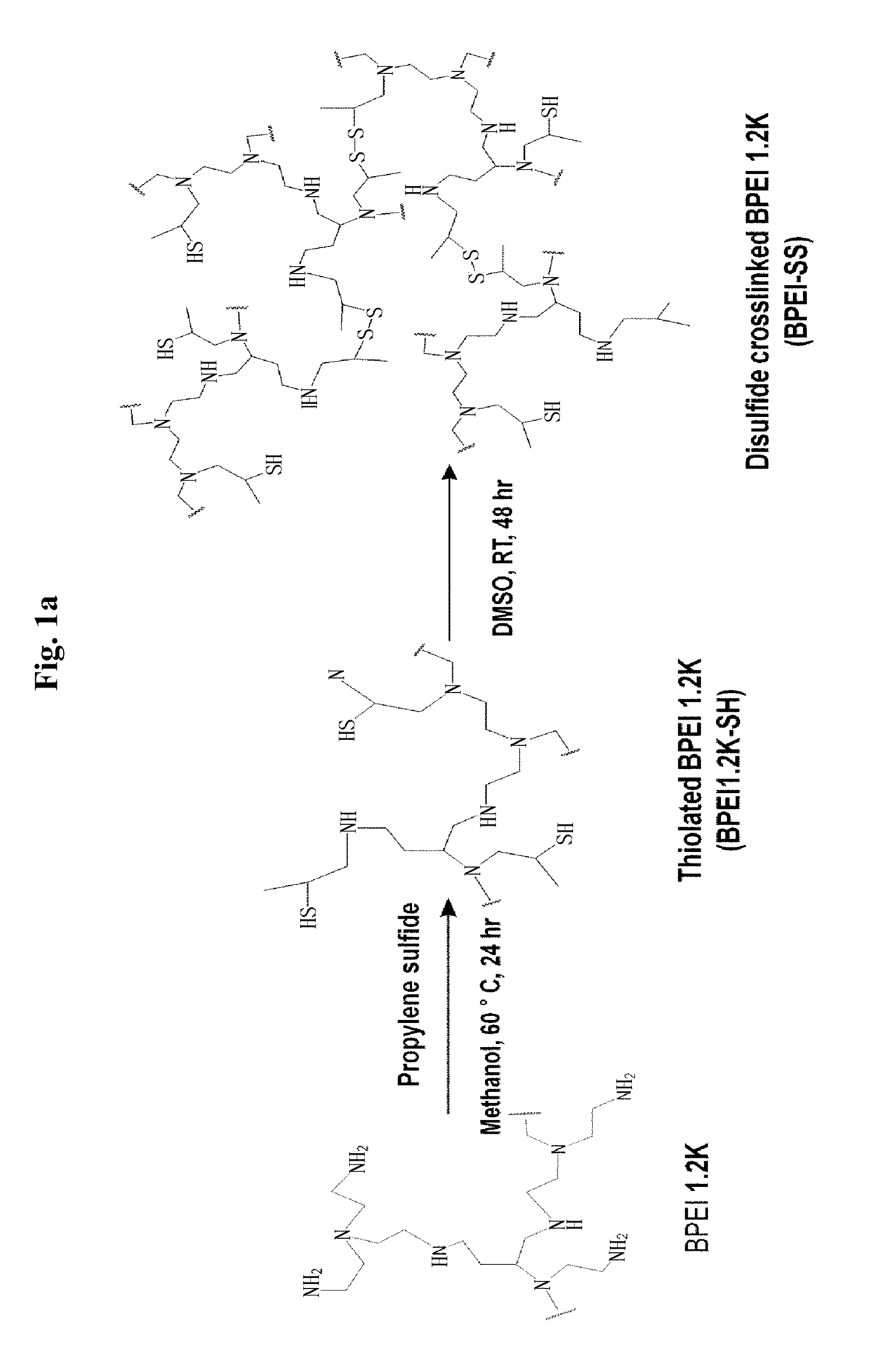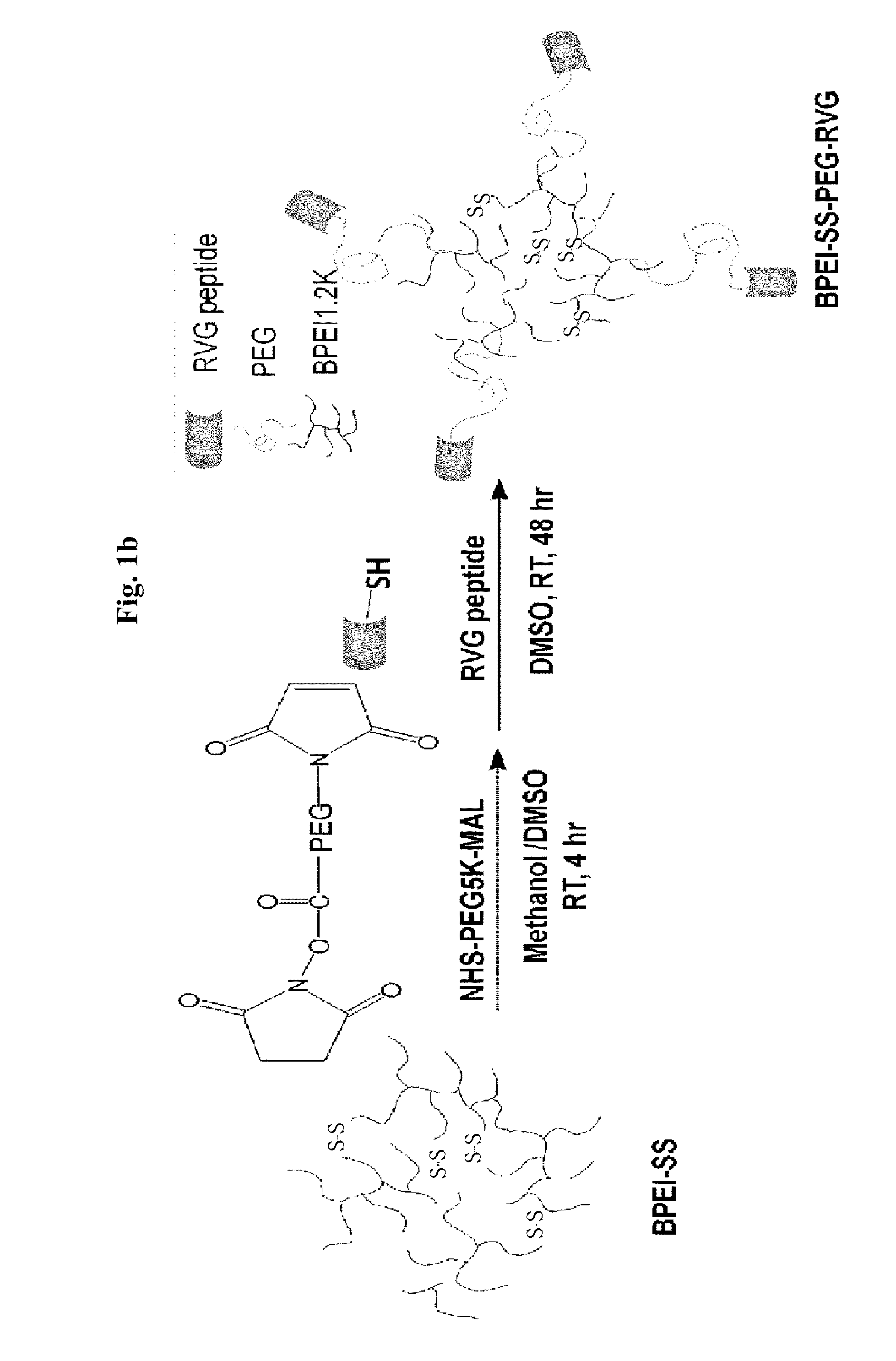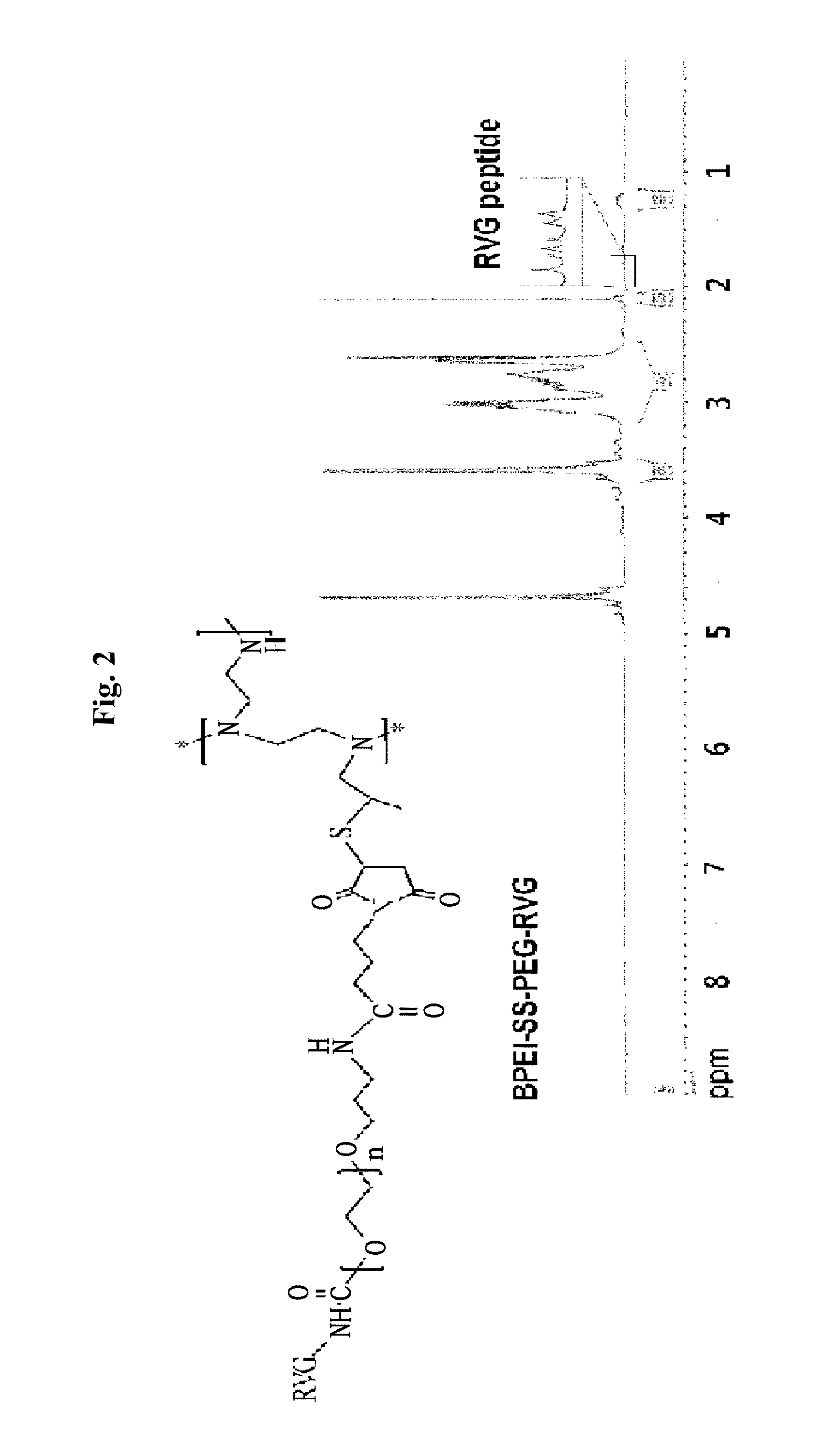Polynucleotide delivering complex for target cell
a polynucleotide and complex technology, applied in the direction of peptides, viruses, vectors, etc., can solve the problems of reducing the efficiency of polynucleotide delivery, reducing the size of polynucleotide that can be accommodated, and difficult for polynucleotide to pass through the cellular membrane to be delivered to cells, etc., to achieve excellent biocompatibility, high delivery efficiency, and high delivery efficiency
- Summary
- Abstract
- Description
- Claims
- Application Information
AI Technical Summary
Benefits of technology
Problems solved by technology
Method used
Image
Examples
example 1
Synthesis of Polynucleotide Delivery System
[0062]1 g of branched polyethyleneimine (BPEI, MW: 1200) was dissolved in 100 ml of distilled water, the pH was adjusted to 7.2, and then the solution was lyophilized for 2 days. 1 g of a yellow lyophilized yellow solid was dissolved in 30 ml of ethanol, the solution was placed in a round-bottom flask, and nitrogen filling and vacuum conditions were repeated 5 to 6 times. 5 and 10 excess mole numbers of propylene sulfide were added to this, allowed to react for 24 hrs while the temperature was maintained at 60° C., precipitated three times in ice-cold diethyl ether, and the residual solvent was removed in a vacuum oven for 1 day to synthesize thiolated BPEI 1.2K (FIG. 1).
[0063]Subsequently, 1.2 g of BPEI-SH was reacted under the oxidation conditions of 100 ml of DMSO for 48 hrs to synthesize a BPEI-SS into which a disulfide bond was introduced, and 0.25 g of NHS-PEG-MAL and 20 mg of RVG peptide were sequentially added to allow them to react...
example 2
Analysis of Synthesized Polynucleotide Delivery System
[0064]1H NMR (Brucker BioSpin 2002) was used to analyze the amount of PEG included in BPEI (PEG: 3.5 to 4.2 ppm, BPEI: 3.15 to 2.55 ppm. FIG. 2), and an area ratio was used to confirm that one PEG had been introduced in 11.2 of BPEI 1.2K. In addition, it was confirmed that a thiol group had been introduced into BPEI 1.2K through a hydrogen peak of a methyl group in propylene sulfide conjugated to BPEI at 1.5 ppm.
[0065]Tryptophan in residues of RVG peptide absorbs light at 280 nm and emits it at 355 nm, these properties were used to observe the amount of RVG peptides introduced into BPEI through a fluorescence method, and it was confirmed that one RVG had been conjugated to 19.7 of BPEI 1.2K.
example 3
Formation of Polynucleotide Delivery System / Polynucleotide Complex and Evaluation of Physical and Chemical Properties
[0066]1) Formation of Polynucleotide Delivery System / Polynucleotide Complex
[0067]In order to evaluate a capability of BPEI-SS-PEG-RVG to form an effective complex and provide protection against degradation, a gel retardation assay was performed. Each of BPEI-SS-PEG-RVG and BPEI-SS was mixed with 200 ng of pDNA in a Dulbecco's Phosphate-Buffered Saline (DPBS) buffer solution at different mixture ratios to form 20 μl of a final solution, and the mixture was left for 30 min to bind a polynucleotide delivery system to a polynucleotide. Subsequently, 12 μl of the mixture was loaded to perform a gel retardation assay. As a result, each BPEI-SS and BPEI-SS-PEG-RVG effectively formed a complex with pDNA at low weight ratios (delivery system / pDNA) of 0.6 and 0.75, respectively, while unthiolated BPEI 1.2K formed a complex at a higher weight ratio of 1.3 (data not shown).
[0068]...
PUM
| Property | Measurement | Unit |
|---|---|---|
| pH | aaaaa | aaaaa |
| weight ratio | aaaaa | aaaaa |
| weight ratio | aaaaa | aaaaa |
Abstract
Description
Claims
Application Information
 Login to View More
Login to View More - R&D
- Intellectual Property
- Life Sciences
- Materials
- Tech Scout
- Unparalleled Data Quality
- Higher Quality Content
- 60% Fewer Hallucinations
Browse by: Latest US Patents, China's latest patents, Technical Efficacy Thesaurus, Application Domain, Technology Topic, Popular Technical Reports.
© 2025 PatSnap. All rights reserved.Legal|Privacy policy|Modern Slavery Act Transparency Statement|Sitemap|About US| Contact US: help@patsnap.com



